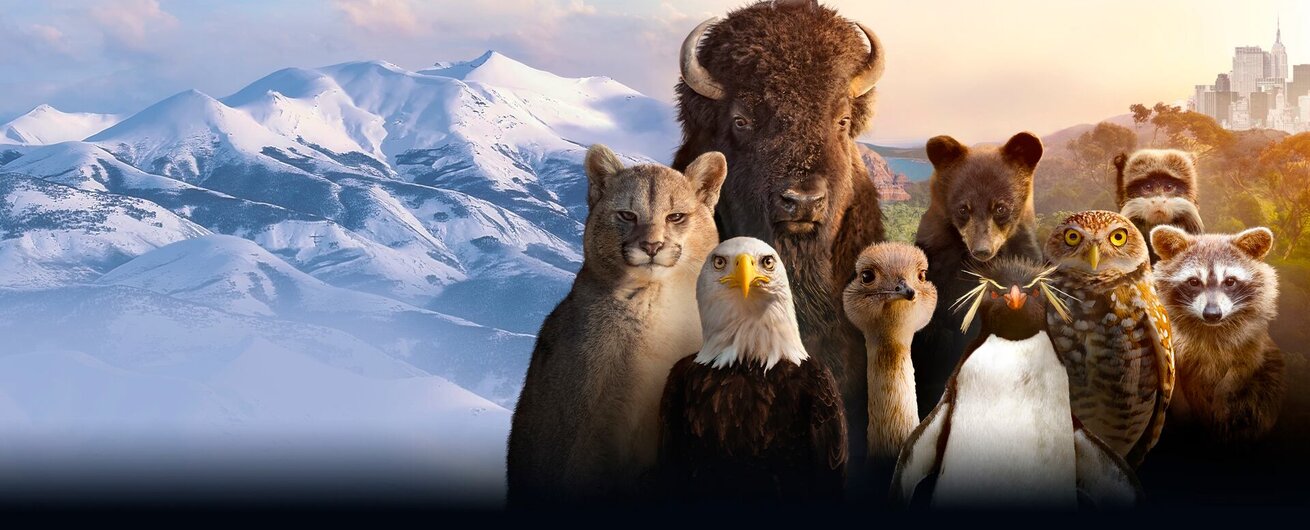The Americas: The Many Trials of Patagonia’s Rockhopper Penguin
Rockhopper penguins fight predators and the elements on the rocky Patagonian coast.
In The Americas, viewers are taken on an expansive 10-episode wilderness adventure. The series covers untold natural stories from North, Central, and South America, stretching from pole to pole and shining a spotlight on everything between the Pacific and Atlantic oceans.
Already, we’ve visited the frozen north, the east and west coasts, the Caribbean, the Andes, and all points between. Recently, The Americas visited Patagonia, a diverse geographical region straddling Argentina and Chile, marking the southernmost portion of the Americas. Its diversity of environment is second only to its diversity of residents. It’s there that you can find some of the most unusual penguins on the planet.
The rockhopper penguins of Isla de los Estados, on The Americas
The island of Los Estados is a refuge for rockhopper penguins. Located roughly 28 miles from the eastern edge of Tierra del Fuego, the island is cold and humid, with rapidly changing weather. Fortunately, rockhopper penguins are perfectly adapted for living on craggy nesting grounds and hunting in the southern seas.
They stand only about 20 inches tall and top out at approximately 8 pounds. They’re considerably smaller than the 3-foot, 50 - 100-pound emperor penguins but not quite as small as the diminutive “little penguin,” which caps out just a foot tall and 3 pounds, fully grown.
RELATED: The Americas Explained: The Secret Lives of the 9-Brained Giant Pacific Octopus
Like most penguins, rockhoppers are covered in mostly black feathers, save for the white on their bellies. They are distinguished from other penguin species by their red eyes, pink webbed feet, and spray of eyebrow-like yellow and black feathers on their heads. They also get around a little differently. While most penguins belly slide on the ice to get around, the rocky environment of Patagonia makes that impossible, so rockhoppers hop, hence the name.
In the water, they dine on krill, invertebrates like squid, and small crustaceans like shrimp, crab, lobsters, and crayfish. They can spend several days at sea while hunting and dive to depths of 330 feet (100 meters) in search of food. In the meantime, rockhopper penguins are hunted themselves, by leopard seals, fur seals, killer whales, and blue sharks.
Land and sea, the dual lives of rockhopper penguins
Rockhopper penguins are well-adapted to enduring cold water while diving, courtesy of a fatty layer, a downy layer, and tightly overlapping waterproof feathers. They can also change the shape of the lens in their eyes, allowing them to see above and below the water. Of course, it takes a little time to develop those traits and skills, so baby rockhoppers need to be fed for about the first month. Later, they join others of their cohort in a crèche, where they learn the skills they need to make a go of it on their own.
Breeding season usually kicks off in October and lasts until March, though the precise timing varies based on environmental conditions and location. Males usually return first to prepare the nest, with females arriving about a week later. Females generally lay two eggs in the hope that one will survive.
RELATED: The Americas Takes us to Mangrove Forests in the Bahamas, A Neverland for Lemon Sharks
Once the eggs are laid, males return to the ocean for 2 to 4 weeks to hunt during incubation. They return by the time the babies have hatched about a month later. One that happens, the demographics of Los Estados change, with babies often outnumbering adults on land. Parents take turns, alternating between staying home to care for the chick or going out on the hunt. Newborn penguins are hungry and need plenty of food to grow.
Hunting adults typically leave the colony in the morning and stay at sea for up to 12 hours, traveling up to 100 miles from home. Leaving the safety of the nest is risky, the waters are filled with various predators keen to make a meal of rockhopper penguins. Getting back home can be just as dangerous.
The coast of Patagonia is jagged, and the waves are harsh. Penguins must leap back onto land, crashing waves tossing them violently against the rocks. Even if they find purchase, they then have to scale the slippery rocks with lumbering sea lions hot on their tail feathers. One webbed foot after another, they climb the mountain. It’s a difficult journey with fits and starts, penguins slide back down, only to repeat the same leg of the journey again, scrabbling over stones with only clawed toes and a shark beak.
Finally, they reach the top and find their family using a unique call, a vocal bell tolling the way home. Only then, can little rockhoppers fill their bellies with a doorstep delivery of krill.
Where to watch The Americas
New episodes of The Americas air weekly Sundays at 8:00 p.m. ET on NBC, and stream on Peacock the following day!




































